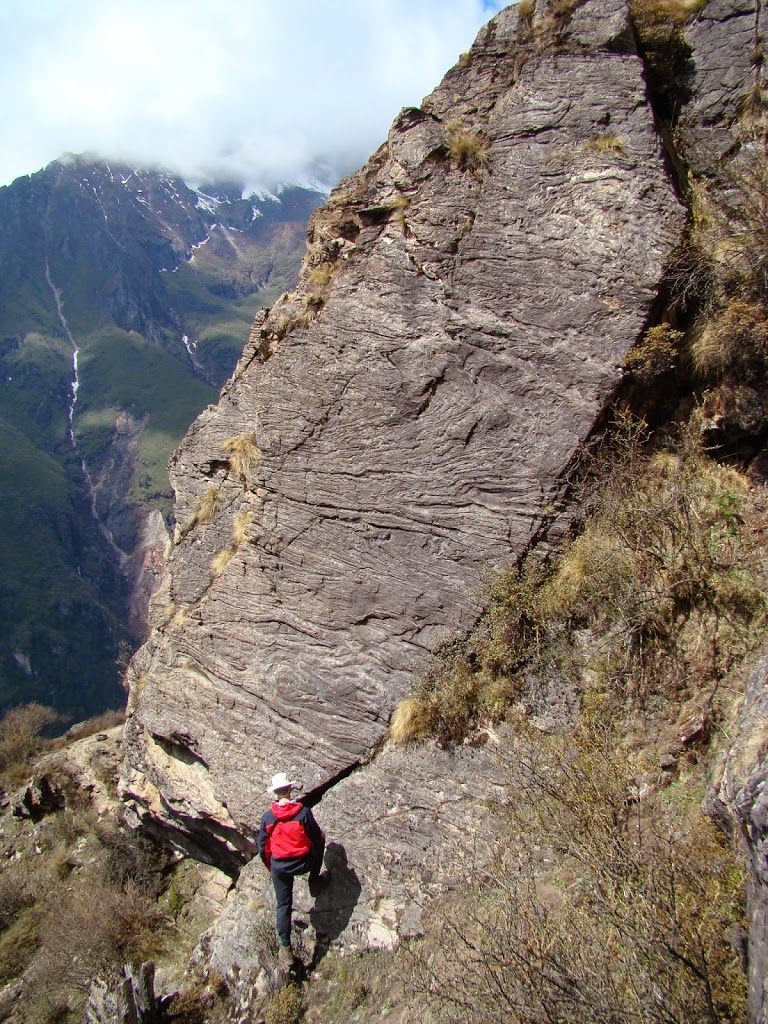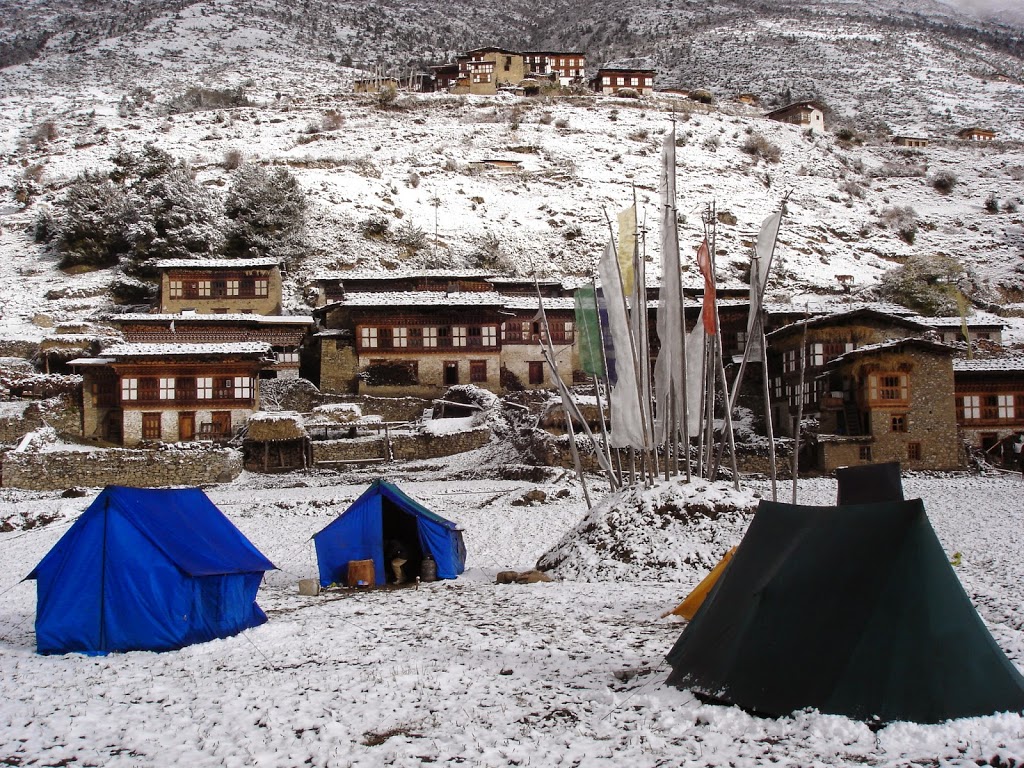 |
|
Tom Argles inspecting the Laya Thrust, Bhutan
|
 |
| Clare at the top of a 5000m pass, Bhutan |
 |
|
At the base of a glacial moraine, NW Bhutan
|
We were on the hunt for rare and elusive high-pressure rocks called eclogites, which had previously been reported from NW Bhutan. These rocks were unusual given what was previously known about the metamorphic evolution of the eastern Himalayas. In particular we wanted to find out how old these rocks were and how they had exhumed to the surface after forming. Did they represent metamorphism in the lower Himalayan crust? Or remnants of the subduction zone that existed before India and Asia collided?
 |
|
Retrogressed granulite boudin, Bhutan
|
It is still unclear how and why these rocks got transported back to the surface so late during the Himalayan evolution and so quickly. They are not positively buoyant compared to everything else around, and they are incredibly young compared to most of the other metamorphic rocks that surround them (~24-18 million years old). There is also no obvious structure to explain their transport. One option is that a particularly cold and strong piece of Indian crust burying its way into the collision zone acted as a ramp, forcefully expelling lower-crustal rocks over the top. Strong erosion may also have helped.
So what is fieldwork in Bhutan like? Bhutan tries to limit the number and ‘type’ of tourists by imposing a hefty daily tourist tax, which sadly, even as researchers, we have to pay. But once the tax is paid, the only things extra are tips for the crew, beer, postcards and, for the geologists, rock shipment. It’s a high altitude country, with few roads, so most travel is on foot, with horses or yaks carrying the gear. The best times of year to visit are October/November, which are cold but dry, or April/May which are warmer but may be damper. In the winter there is too much snow and in the summer it rains. All the time. And the rain brings out the leeches… yuk!
 |
|
Typical camp scene, Bhutan
|
 |
|
Camping in the snow, Laya
|
References:
Videos on YouTube from the Himalayan-Tibet research group at the Open University: https://www.youtube.com/user/HiTGroupOU
![]() This work is licensed under a Creative Commons Attribution-NonCommercial-ShareAlike 4.0 International License.
This work is licensed under a Creative Commons Attribution-NonCommercial-ShareAlike 4.0 International License.
